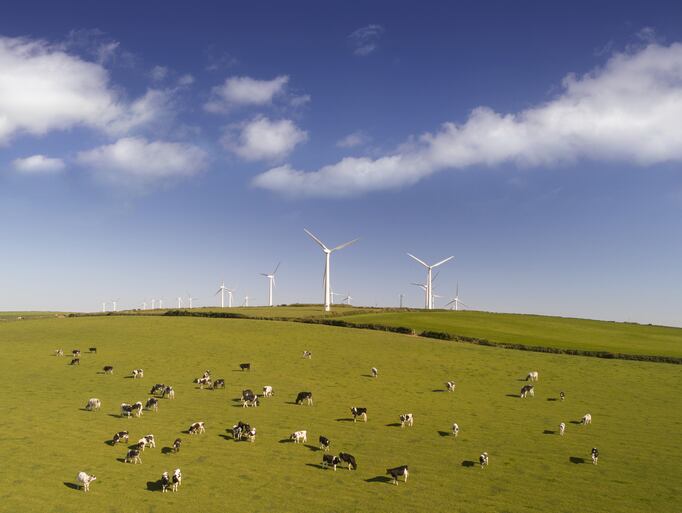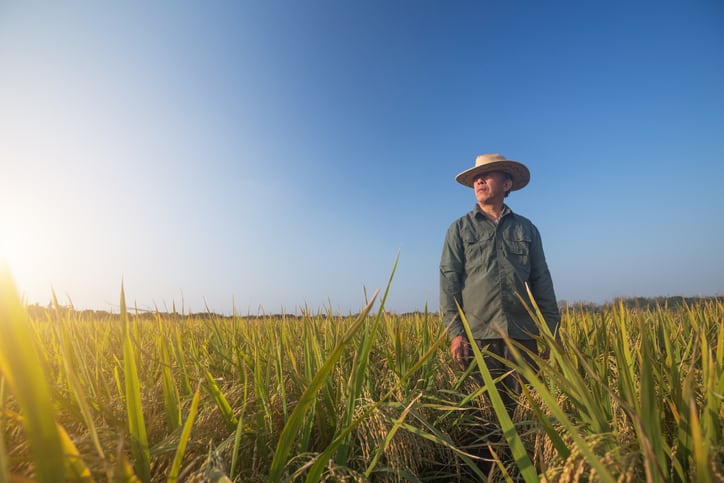Over the past two years, US “agriculture has gone through a reset so that conditions are very different now than they would have been if I was describing the same set of conditions two years ago, before the pandemic, as incomes are much higher, credit problems and financial stress is much different than it had been before the pandemic, levels of bankruptcy even are about half of what they would have been on a quarter-to-quarter basis before the pandemic,” Nathan Kauffman, vice president, economist and Omaha Branch executive at the Federal Reserve Bank of Kansas, told attendees last week at the virtual USDA Agricultural Outlook Forum.
“Looking forward … the picture gets a little bit blurrier, and maybe a bit more complicated,” but “2022, I would argue appears to be a relatively strong year,” Kauffman said. Although he quickly added that the current and upcoming years may not be as strong as the past two as there are myriad “risks that may unfold alongside some of these broader economic conditions.”
US Agriculture’s building fortunes
The US agriculture’s current financial strength is a sharp reversal from its disadvantaged position before the coronavirus outbreak as the sector has gained tremendously from demand shifts and government stimulus brought about by the pandemic.
Unlike the broader US economy, which had rebounded strongly from the great recession with unemployment dropping to 3.5% in 2019 compared to a peak of 10% in 2010, real GDP up by 25% in that period, housing prices up 50% and the equity markets triple their value by the end of 2019, agriculture in the past two years was, Kauffman described, “mired in a prolonged economic downturn,” which, “if not for the broader economic strength .. may actually have been even worse.”
He explained that from 2014 to 2016 average farm income fell 50% and agriculture commodity prices had been low since 2015 so that stakeholders in the space were suffering.
In the early months of the pandemic, US agriculture’s economic conditions went from bad to worse with commodity prices plunging, bankruptcy rates and delinquencies increasing and a deterioration in of working capital and other financial metrics so that there was concern the situation could trigger a wave of foreign bankruptcies, Kauffman said.
But then, thanks in part to China placing large orders for agriculture products several months into the pandemic, agricultural commodity prices quickly recovered – lifting up profits, which in turn eased financial stress and pressures that had been building for years prior to 2020, he said.
Farmland values also began to climb – increasing about 25% form the previous year, he added.
But as many of the strains of the pandemic ease, Kauffman said the question is whether the positive reset experienced in agriculture is a “a new and brighter picture for the industry, maybe even strong than what might have been imaged several years ago? Or has this reset led to just a temporary brighter picture?”
Signs of optimism and risks
While the answer, as Kauffman noted, might still be a bit ‘blurry’ with so many factors in play, he said there are several signs for optimism that agriculture’s better position will last and continue to improve.
These include a the strongest increase in real GDP in 2021 that has been seen for years, as well as the strong overall positioning of households, foreign business and producers, which combined level-set a new, stronger foundation for growth, Kauffman said.
He explained that low unemployment and rising wages at about 5% as well as a fair amount of cash savings thanks to stimulus funds are helping to fuel sustained consumer spending. Likewise, restored working capital levels are bolstering foreign businesses and many producers have paid down debt and some have even used cash to finance the upcoming year-to-year operations, where as before many would have relied on financing to operate.
Rising land values is another reason for optimism and one that Kauffman expects to increase more in 2022 given the momentum currently. But, he cautioned that land values are a bit of a double-edged sword and also fall into the risks category for the overall financial health of US ag.
He explained: “Many of our contacts expect land values to continue to increase further in 2022, given the momentum we’ve seen, but at the same time, many of these contacts also do feel that land values may be overvalued. And this is important because that would suggest that whereas there might be some momentum right now, there’s perhaps a view that some of the risks that had existed prior to the pandemic may still be relevant going forward.”
He also warned that the broader economy’s growth appears likely to slow in 2022 and 2023, which could have strong implications for agriculture.
This slow down is partially related to government stimulus that helped economic growth go from a typical range of about 2-2.5% growth to 7% in 2021. As government stimulus wears off, there is a risk that growth will slow again.
Relatedly, upwards of half of net farm income in 2021 and 2020 came from government payments that are unlikely to be offered at he same level going forward, again contributing to a slowdown, he said.
Finally, rising inflation and the associated potential for changes in the interest rates could negatively impact margins and farmland values going forward, Kauffman added.
Weighing these risks and benefits, Kauffman stands by his prediction that the current reset benefiting the US agriculture industry will sustain at least through 2022, but advised stakeholders to remain vigilant as inflation, supply chain challenges, labor constraints and other risks continue to carry important implications for agriculture.




